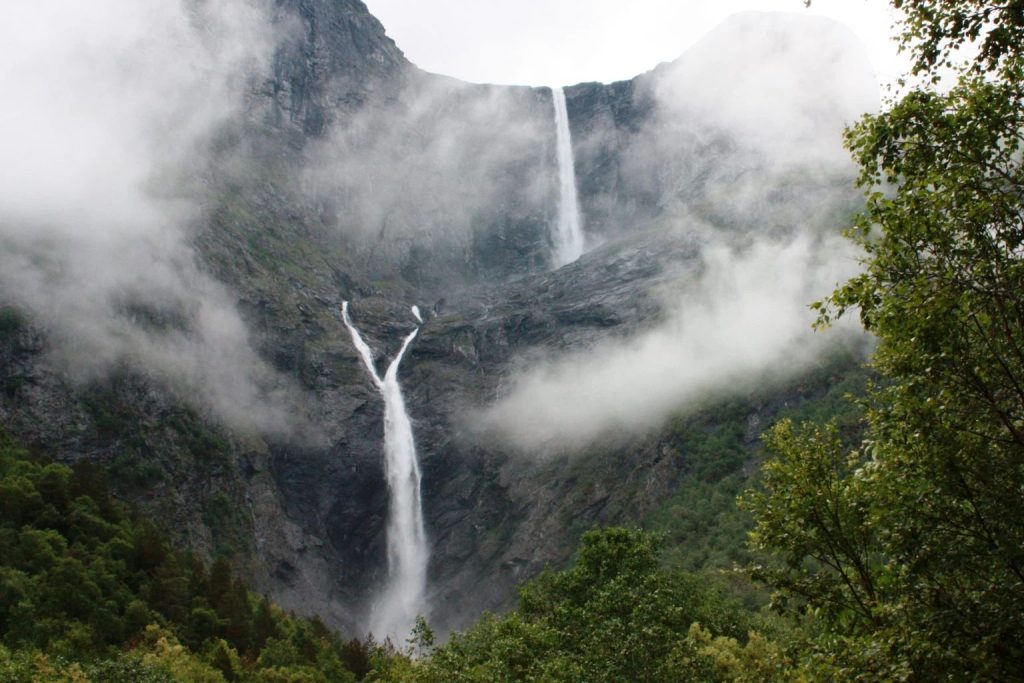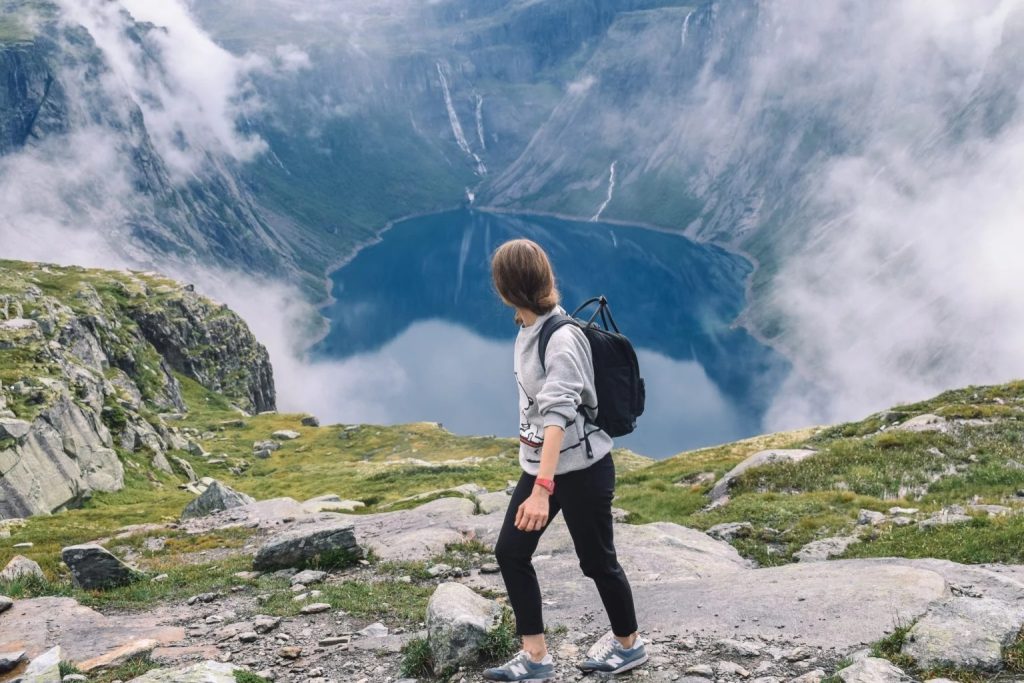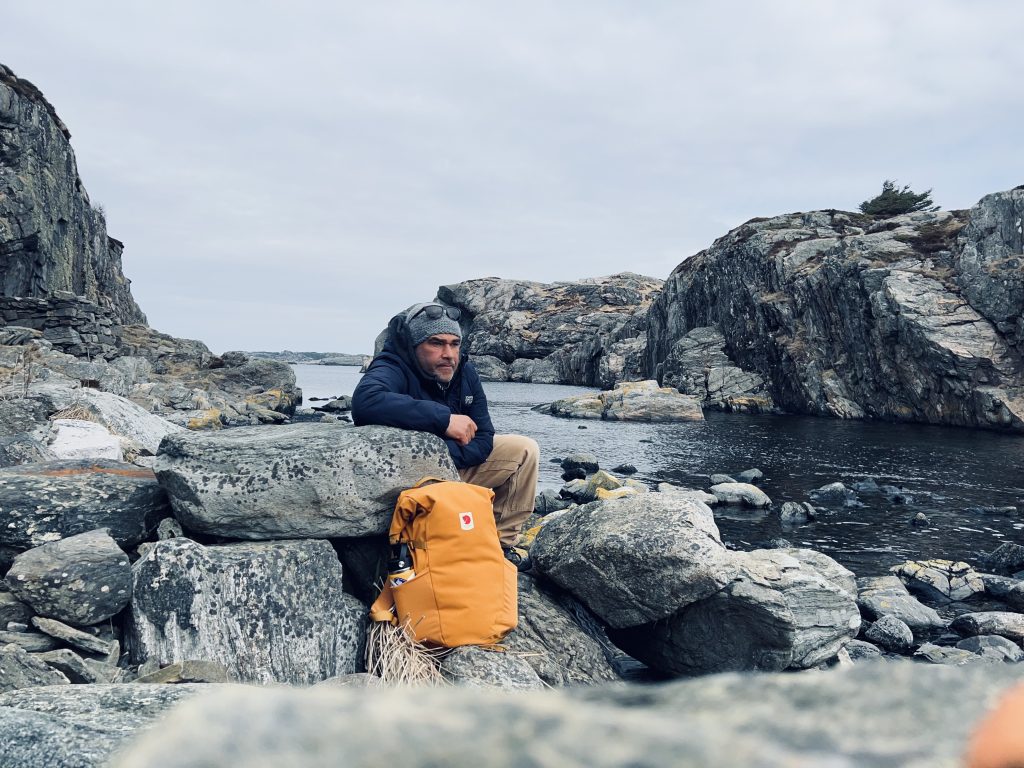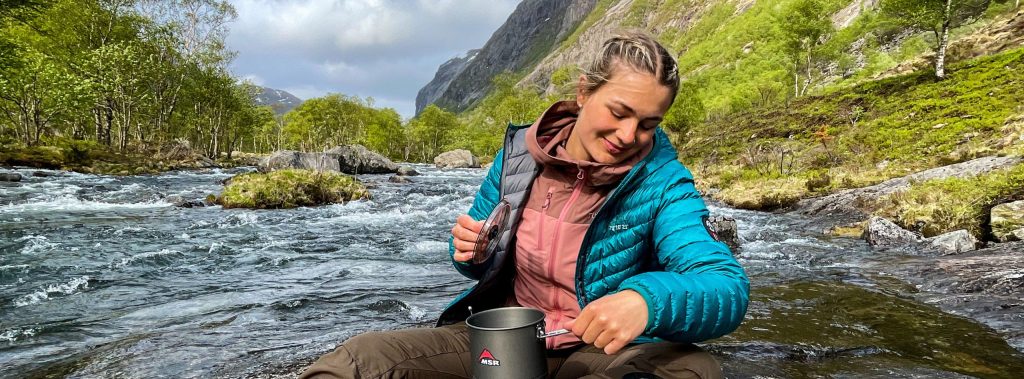Magical properties, Trolls and the Huldra. Waterfalls in Norway are much more than the beauty that meets the eye.
When visiting Norway and exploring the beauty and wilderness of Norwegian nature, waterfalls are an important part of it. Depending on the weather, they can be quiet and slow-paced, or furiously plunging down the mountainside.
Did you know that 10 of the 30 tallest waterfalls in the world are actually to be found in Norway? Connecting the mountains with the fjords, or as a vital part of wild and beautiful rivers, they make their unmistakable mark on the stunning beauty of the Norwegian landscape.
The best time of year to explore the waterfalls is usually in May and June, when the water from the melting snow makes its way down the mountainsides. The most beautiful waterfalls are situated in the south-western parts of Norway, so you are most likely to experience them at their finest there.
Among the 10 most popular waterfalls are Vettisfossen, voted by Norwegian newspaper readers to be Norway’s most beautiful waterfall. It has a drop of 275 meters and is the highest unregulated free-falling single-drop waterfall that Norway has to offer.
Vettisfossen
Vettisfossen is situated in Årdal, a small town by the beautiful fjord Sognefjorden and at the southwest part of popular mountain area Jotunheimen (the home of the giants). Not only will you find this beautiful waterfall, but also plenty of opportunities for hiking in the mountains. You can hike to the waterfall, it is about an hour and a half from the farm Hjelle, by Øvre Årdal.

Vinnufossen
If you want to see the tallest waterfall of them all, Vinnufossen (also called Vinnufallet) is the one. It drops fiercely over 800 meters down the mountain and is part of the river Vinnu. This river consists mainly of water from the glacier Vinnufonna, Møre and Romsdals largest glacier with a surface area of 1.3 km2 and 1.8 km in extent.
You can visit it in Sunndalen, at the northwest of Norway in Møre and Romsdal county. This waterfall is considered Europe’s highest and is also ranged as the 6th highest in the world. You can easily see this waterfall from the road 70, not far from Sunndalsøra near Oppdal. The best time to visit is in the summer, between June and August.
Sunndalen is in general an area with many amazing waterfalls, including Åmotan and Mardalsfossen.
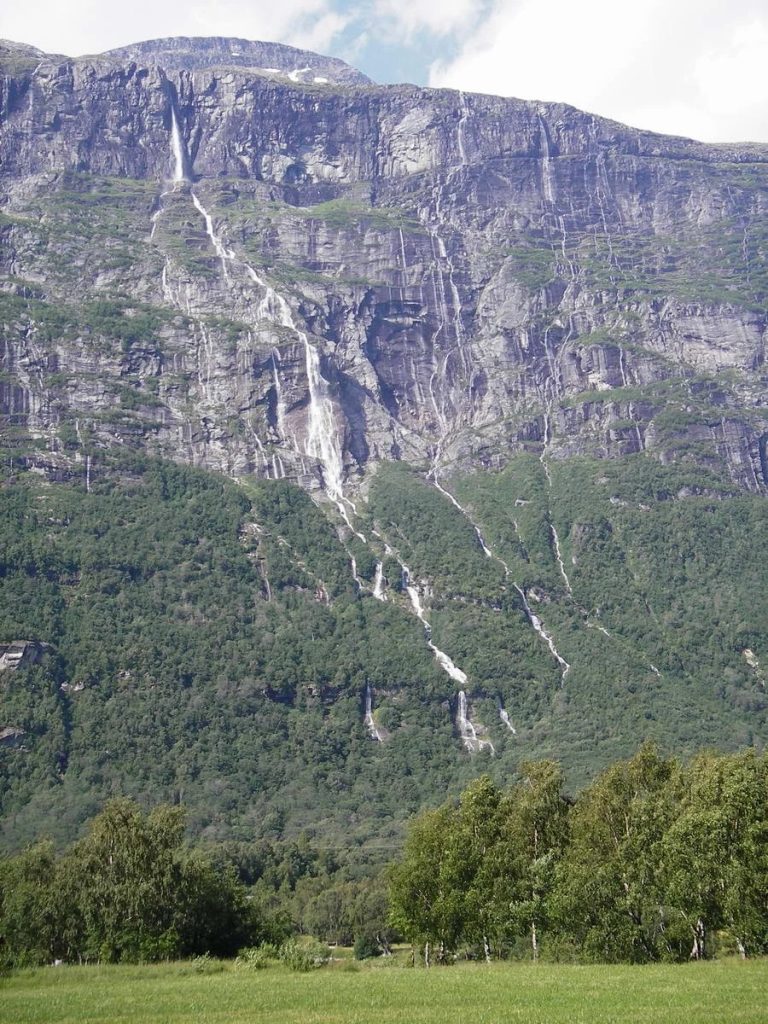
Låtefossen
Låtefossen is one of Norway’s most visited tourist attractions. More than 650.000 people visit this beautiful place every year. This waterfall is situated in Ullensvang, Vestland county. It drops 165 meters over a stretch of a total of 400 meters.
Låtefossen is special because it consists of two different streams from Lotevatnet that merge in the middle of the fall. Technically Låtefossen is two waterfalls, Skarsfossen in the south and Låtefossen in the north. This waterfall has a consistent flow all year round. Road 13 crosses the nether part of the waterfall on a stone brigde. The cascades of water from the Låtefossen makes the road wet all year round, so drive carefully. The bridge is built with 6 tunnels for the water to pass through.
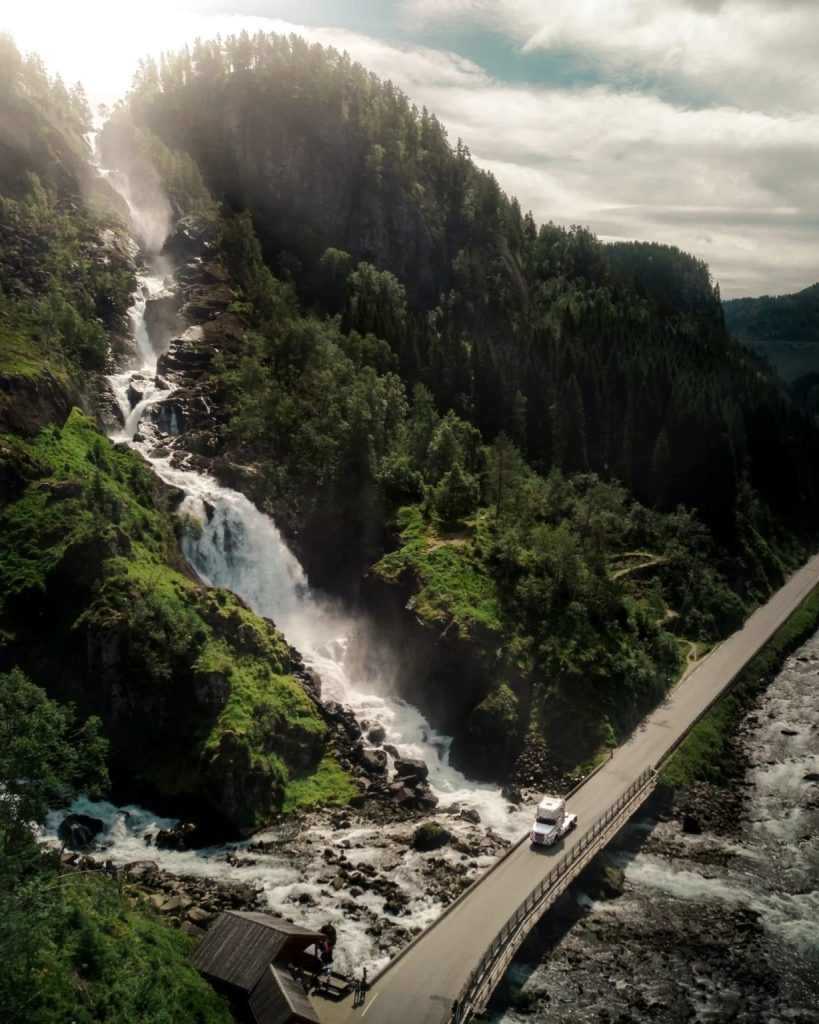
Vøringsfossen
Vøringsfossen is part of the river Bjoreieo at the top of the Måbødalen valley in the municipality of Eidfjord, in Vestland county. Vøringsfossen has a drop of 182 meters, and a free fall of 163 meters. The river is somewhat constrained by the production of electricity nearby, due to a hydroelectric dam in the Sysendalen valley above the falls. This spectacular waterfall was voted Norway’s most visited natural attraction in 2006.
Located near Norwegian National Road 7, which connects Oslo with Bergen, this is perhaps the most famous waterfall in Norway and has been an attraction for centuries. As early as 1880 tourists hiked up the hillside on a path of 1500 stairs to admire the waterfall and the spectacular view. Fossli Hotel was built on top of the mountain in 1891 and later, in 1900 the first cruise ships arrived. Passengers were brought to the hotel by horse and wagon, but these days you can get there by car.
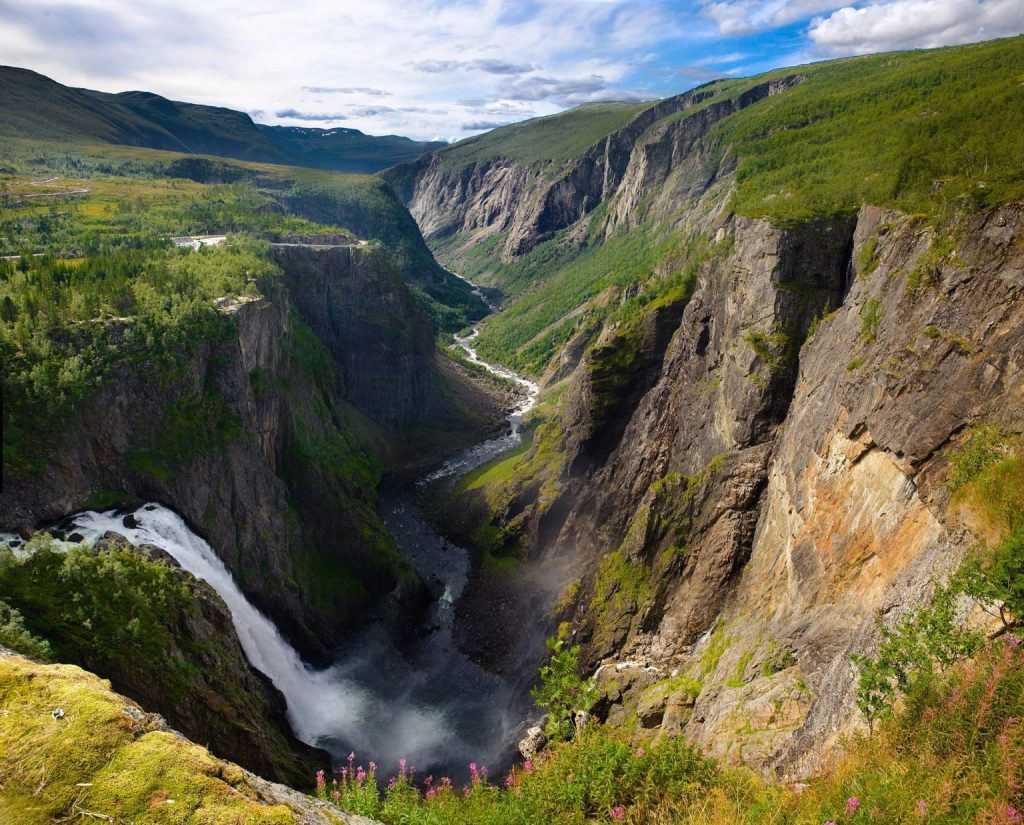
The Seven Sisters
The 39th tallest waterfall in Norway, The Seven Sisters (“De syv søstre”) can be found about 6.5 kilometers west of the village of Geiranger, in Geirangerfjorden at Stranda Municipality in Møre og Romsdal county. Part of the Geiranger World Heritage site, it is located south of the historic Knivsflå farm, across the fjord from the old Skageflå farm.
The 410-meter tall waterfall consists of seven separate streams, and the tallest of the seven has a free fall that measures 250 meters. Named after its similarity to the hair of seven sisters, the legend states that the seven sisters danced down the mountain side, flirting with the single waterfall on the other side of the fjord called “Friaren” (The Suitor).
The best way to visit is by boat on the Geiranger fjord, and the best time to see all seven of the waterfalls are between May and July.
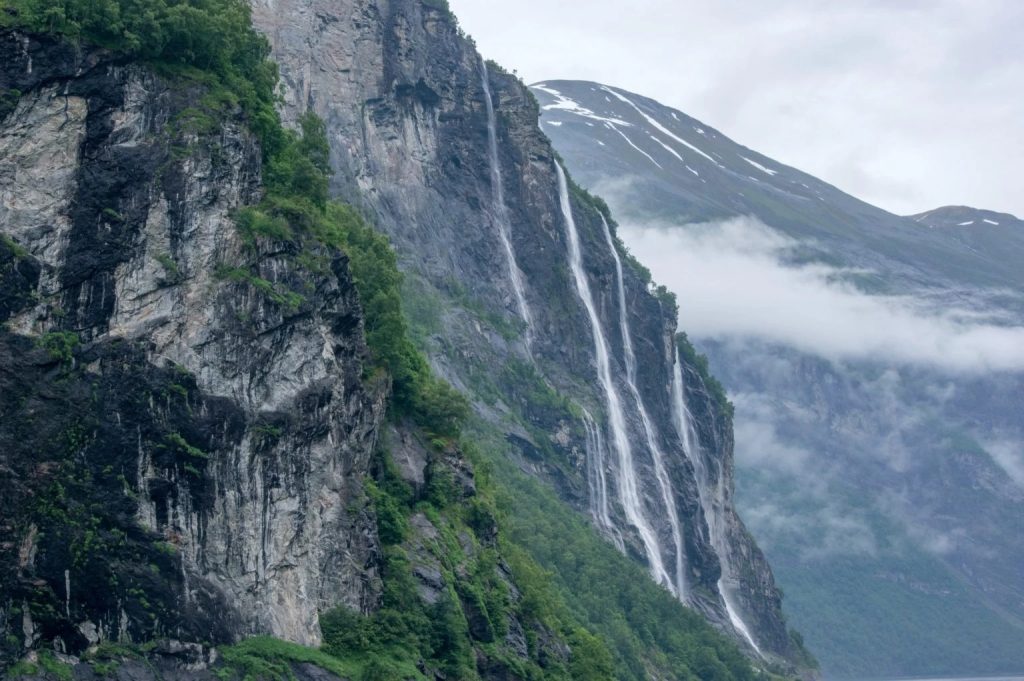
Kjosfossen
The mighty Kjosfossen is one of many highlights on the Flåm Railway, a ride mentioned by the National Geographic Traveller Magazine on their list of top ten train rides in Europe. The unique Flåm Railway will take you from high mountains of Myrdal station, through Flåm valley and to the very bottom of the Aurlandsfjord with Flåm station as its final destination.
Kjosfossen is a very popular tourist attraction in Norway and its total fall is around 225 metres. A small power station is connected to the waterfall, which is in fact used to power the Flåm Line railway.
One of the unique features of Kjosfossen is that if you are lucky, you can experience the mythological creature Huldra dancing and singing by the waterfall during the summer.
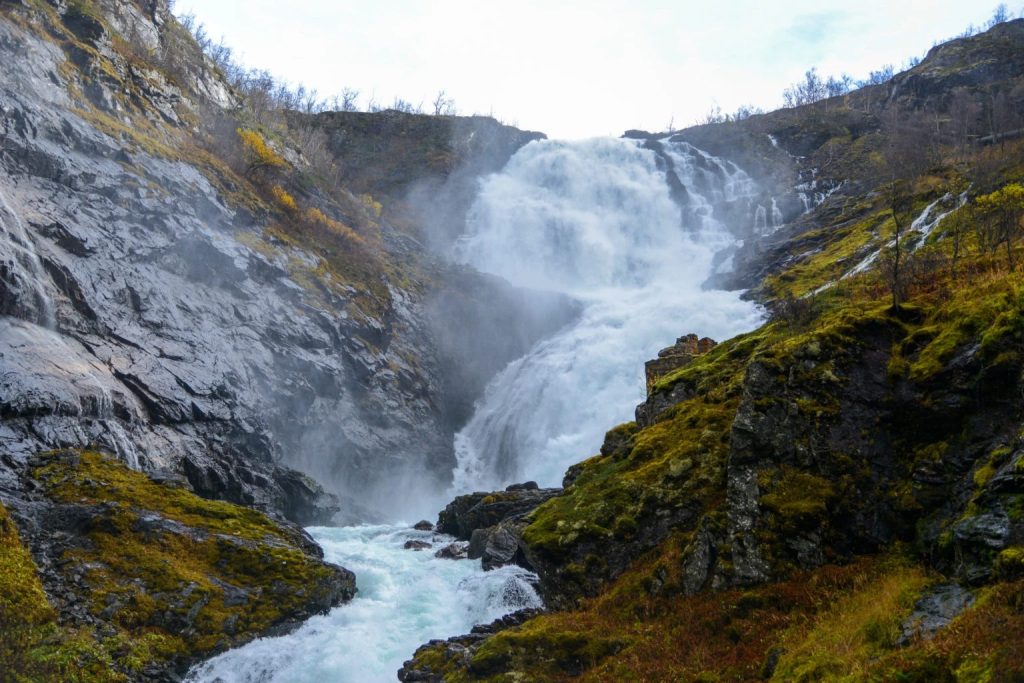
Langfossen
Langfossen in Etne Municipality in Vestland county is voted one of the world’s 10 most spectacular waterfalls by CNN. Its waters cascade 612 meters down the mountainside into the Åkrafjord, and the fact that is does not have a free drop like most waterfalls, but instead follows the mountainside closely, makes it special.
Located about 5 kilometers southwest of the village of Fjæra, European route E134 runs along the base of the waterfall, so it is easy to access. Langfossen is also one of the few waterfalls in Norway that is still in its natural state, not being used in hydroelectric power generation like most of the waterfalls in Norway.
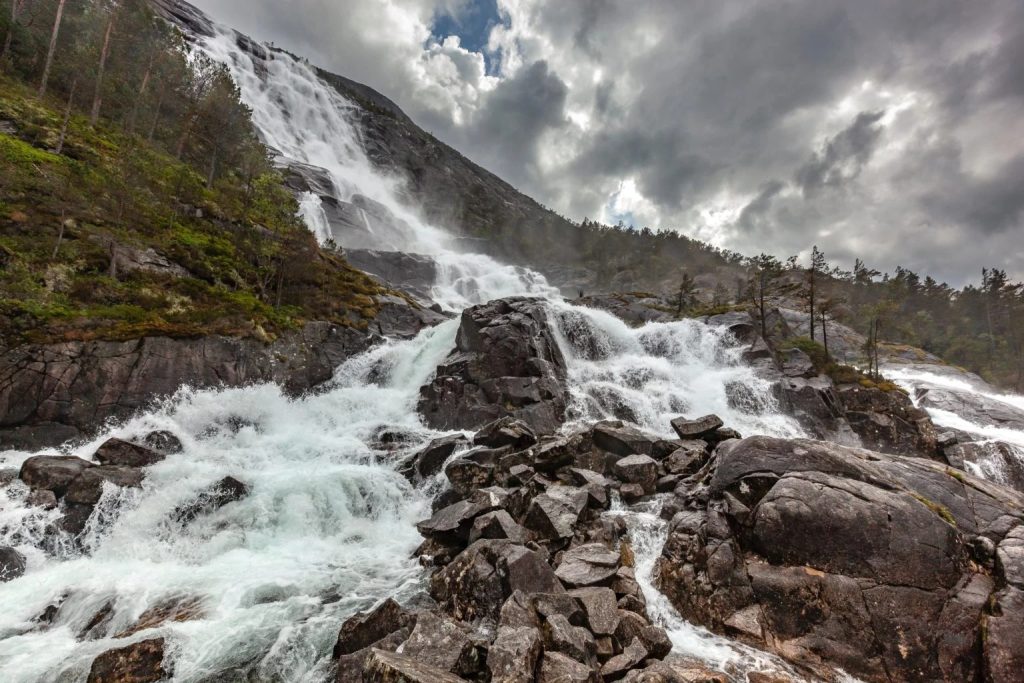
Tvindefossen
Wild and beautiful, the waterfall Tvindefossen (also called “Trollafossen”- The Troll Waterfall) is located in Voss Municipality in Vestland county, about 12 kilometers north of Vossevangen by the road E16 to Flåm. This many-stranded waterfall is 116 meters high and originates from the stream Kroelvi.
The water of Tvindefossen is said to have magical properties, but if it really is a fountain of youth and sexual potency is for each person to decide. What is not unsure is that it is one of the most popular tourist attractions of western Norway, with up to 300.000 visitors a year. Many of them fill their water bottles (link til termoflasker) to check if the myths are true.
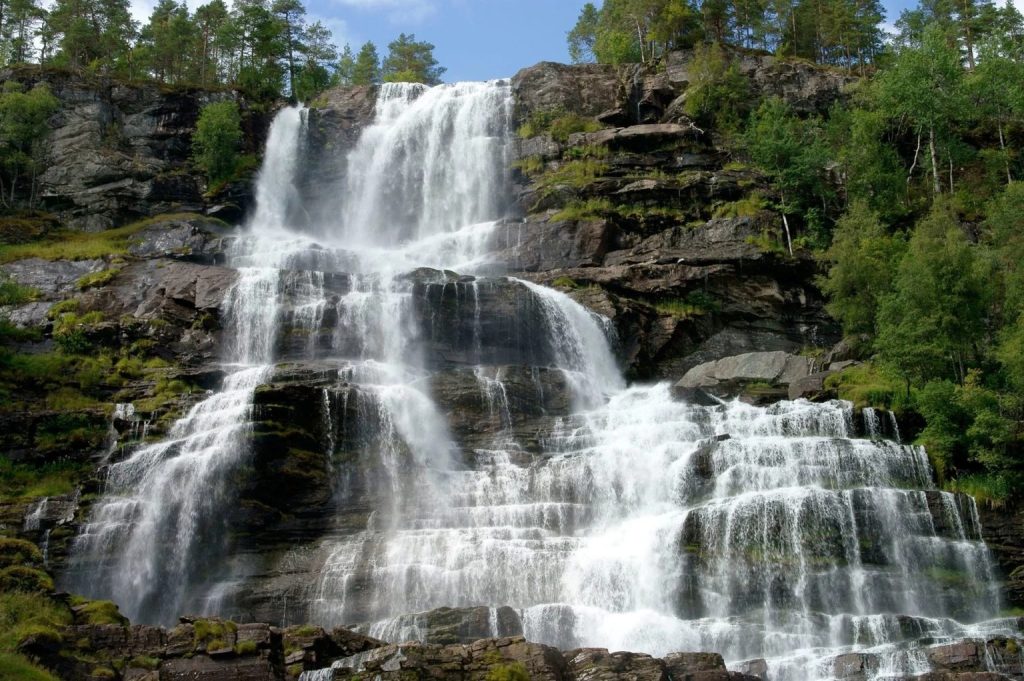
Steindalsfossen
Steindalsfossen is a smaller waterfall, only 46 meters high, with a main drop of 20 meters. This wonderful waterfall is one of the most visited tourist sites in Norway. It is located at the village of Steine in the municipality of Kvam in Vestland county, about 2 kilometers west of the large village of Norheimsund which sits along the Hardangerfjorden.
Steinsdalsfossen originates from the Fosselva river that comes from the water of the lake Myklavatnet, located 814 meters above sea level in the mountains above the waterfall.
There is a path from the parking lot along the waterfall and up the hill where you can walk into the waterfall for an amazing view. You do not need to bring your rain wear (link til Blæst eller ScanEx regntøy), since the path beneath the waterfall is made in a way that you can experience it without getting wet. May and June are the best months of the year to visit, as the melting snow from the mountains contributes to its most powerful flow.

Mardalsfossen
Mardalsfossen waterfall is by the river Mardøla, flowing out of a hanging valley into the lake Eikedalsvatnet, about 2 kilometers northwest of the village Eikesdalen. Mardalsfossen is located in Møre og Romsdal county, and is often referred to as one of the tallest waterfalls in Europe with its fall of 705 meters.
This is what we call a tiered waterfall, since it consists of two large drops and several smaller ones further down. The width varies from 12 to 30 meters, and the total drop is one of the tallest in all of Norway.
As most waterfalls in Norway, Mardalsfossen is tapped for hydroelectric use. During the summer months of June to August, the water flows over the falls, but the rest of the year it is channeled for electric purposes. Famous Norwegian philosopher Arne Næss was in fact among the 300 protesters that tied themselves together to stop the building of the dam in 1970.
A majority of the waterfalls in the country are, sometimes controversially, used for energy purposes, and powers a lot of the local industry. Luckily, most of them can still be admired in the summer, when the Norwegian nature is at its finest.
